Cohiba Lancero Cuban Cigars: Talked About Far More Than Smoked
by Ken Gargett
As the Scottish poet Robert Burns said, “The best laid schemes o’ mice an’ men.”
Yes, John Steinbeck pinched it from him. And, yes, a great many people around the globe have far worse problems, but my own home state has cut me off and locked me out thanks to border closures due to COVID-19. Very frustrating. Talk about needing a good cigar. But before that could happen, a dose of shingles – may I most strongly recommend that anyone not vaccinated against shingles make it happen as soon as possible (and grab that other vax while you are at it if you haven’t already done so).
A (female) friend of mine who had also suffered from this disease told me that the pain from shingles is ten times that of childbirth. I’m in no position to compare, but she was, and this is something that does not go away quickly. So a good cigar, wine, champagne, spirits – it was all put to one side for a while. Finally, it was time to catch up on the regular cigar videos I do with a friend of mine as we’d missed a few weeks. I was hoping for something decent, and he did not disappoint.
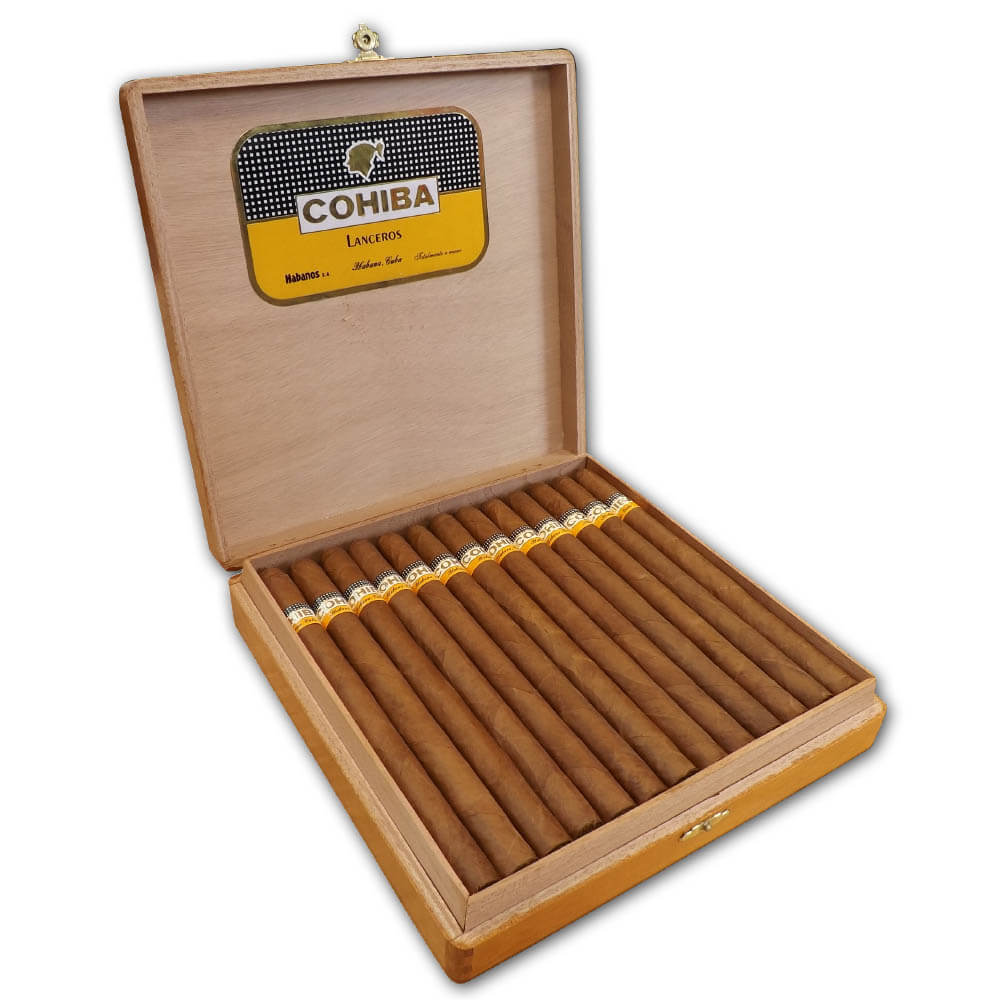
Cohiba Lancero Cuban cigars
Cohiba Lancero is arguably the most famous cigar of all. It is, however, a cigar that is talked about far more than it is smoked. Why? With measurements of 7½ inches and a ring gauge of 38 (not to forget the little pigtail at the end), it falls smack in the center of what the old timers call the “long and skinnies.”
Long and skinnies are exactly what the Cohiba Lancero claims to be. These days, the trend is very much to the shorter and fatter, especially fatter, and sometimes it is hard to think that there is not a competition going on to see who can roll the fattest cigar (like a few years back when breweries seemed determined to see who could produce the world’s most alcoholic beer – I believe that Scottish brewery Brewmeister managed to hit 67.5 percent ABV with its Snake Venom, but would you really want to drink it for pleasure?). Too often they feel like trying to smoke baseball bats.
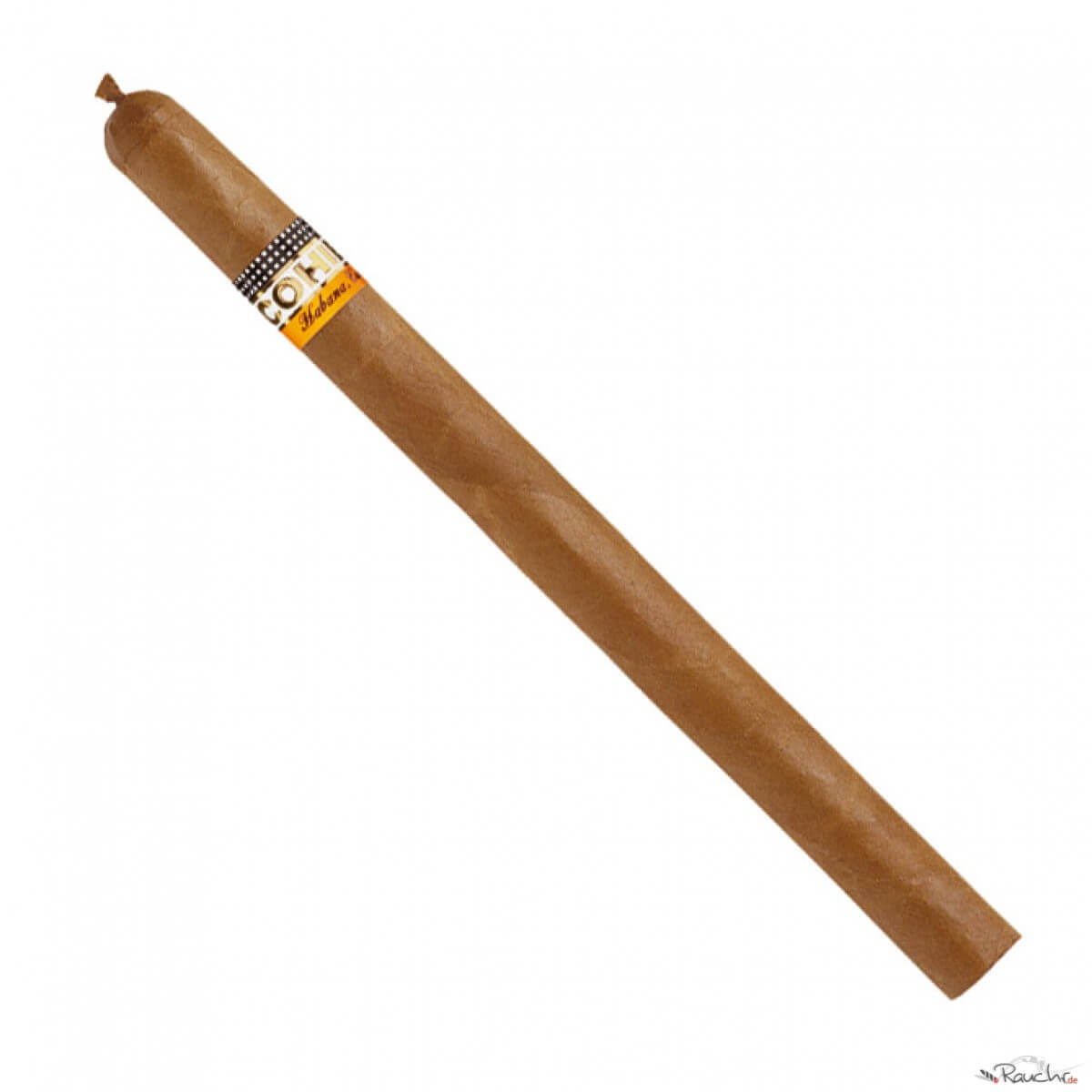
Cohiba Lancero Cuban cigar
For reasons unfathomable, slim cigars are currently looked on with disdain, and numerous examples have been discontinued (fortunately, many rollers/makers love the size so we have not seen total extinction just yet). Newcomers to the hobby would do well to take note of what those old timers enjoy. And years of experience have many of them sticking very much to the ever-diminishing number of long and skinnies.
I would never suggest that anyone restrict themselves to any particular size, but I do recommend that you do not rule out options. I have no doubt that given the chance, most cigar lovers will come to appreciate and adore the long and skinnies.
Cohiba Lancero: panatela, long, skinny
Today I am talking Lancero, but there are others of course. Lanceros fall within the broader group called panatelas (Lanceros are sometimes called long panatelas). The Cohiba Lancero is 7½ inches in length and with a ring gauge of 38. For other wonderful cigars in this range, look to the Trinidad Fundadores (also 7½ inches in length, but a ring gauge of 40) and the Montecristo Especiale No. 1 (same size as the Cohiba Lancero). Montecristo No. 1, different to the Especial, is 6½ inches with a ring gauge of 42. There are others, of course.
So why smoke a long and skinny? The wrapper plays a much more dominant role here, as one would expect, as it takes up a much higher percentage of the leaf used for the cigar as naturally less filler is required. The Cohiba Lanceros we smoked for the video review had the most glorious wrappers, a beautiful colorado rosado coloring. It is said that the greater influence of the wrapper gives the cigar more of the taste of the original terroir. If rollers do not have access to suitable and seriously good wrapper leaf then they should not be making this size.
One of the problems with these cigars is that they are more difficult to roll than the short fatties. Overfill and underfill are issues. Underfilling can mean a hot burn and bitterness. Overfilling will affect the draw. So if you are unlucky and stumble on a box poorly rolled, it is likely you’ll be less enamored than one would wish.
However, this also means that many producers use their best rollers for these cigars, so when they are good they are very, very good. A lovely comparison was once made suggesting that the long and skinnies were the equivalent of a fine dining experience, whereas the shorter fatter cigars were more akin to the all-you-can-eat buffet.
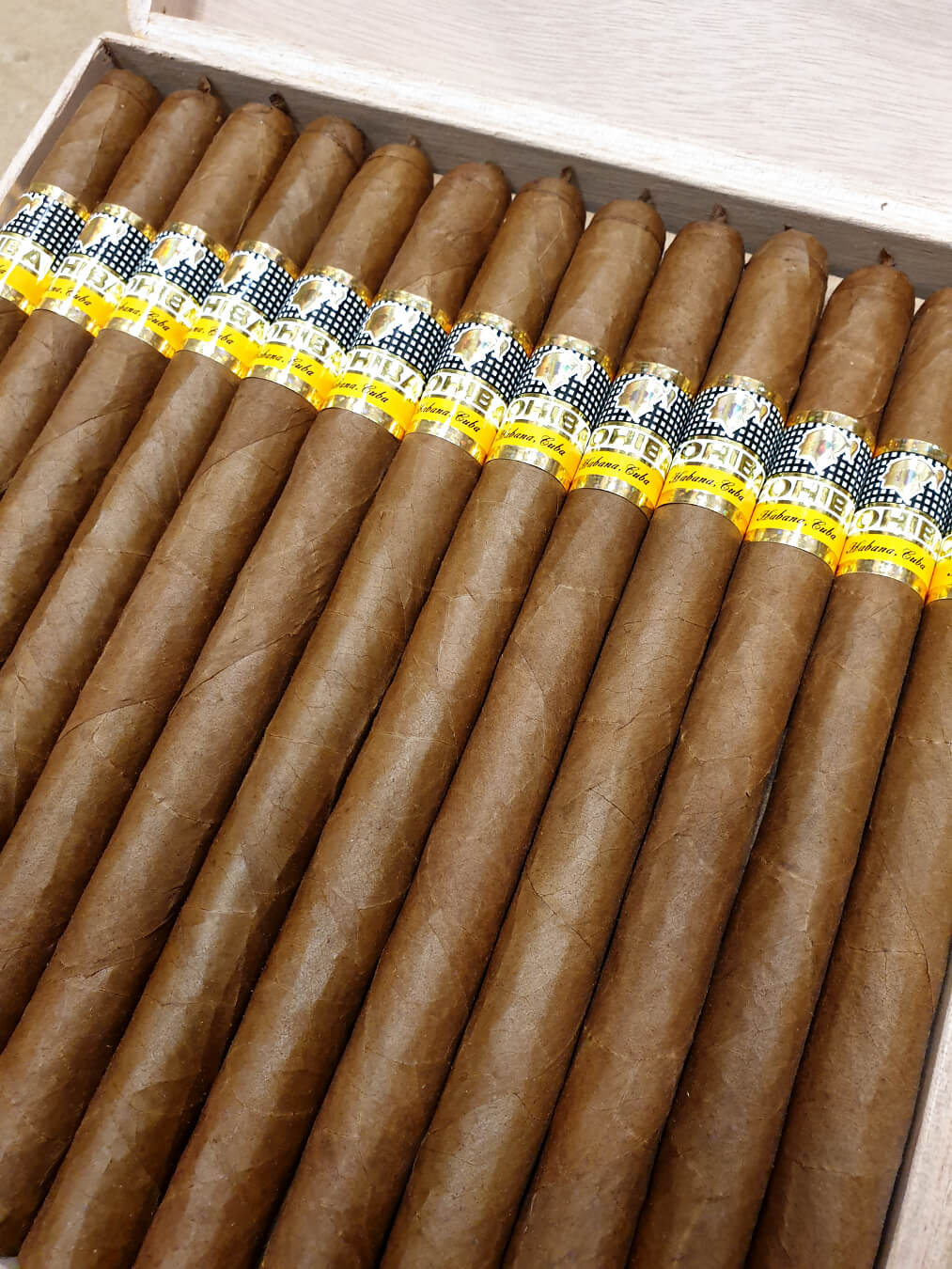
Cohiba Lancero Cuban cigars
Cohiba Lancero: perhaps the most famous of all cigars
Why would I suggest that the Cohiba Lancero is perhaps the most famous of all cigars? It all dates back to the early days of the Fidel Castro regime and a story that has become so well known that many think it an urban myth (not so). I touched on it previously in Cohiba Maduro 5: Some Of The Most Faked Cigars In The World (For Good Reason), but as this is the very cigar allow me to do so again.
The tale begins in the early 1960s, shortly after the revolution. At that time, there was no such thing as a Lancero, nor was there a brand called Cohiba. In that story on the Cohiba Maduro 5, I quoted the interview that Marvin Shanken, founder of Cigar Aficionado, a magazine that has probably done more to promote an interest in cigars than any other, had with Fidel Castro in the 1990s. Castro himself recounted how both came about. It was all thanks to a cigar Castro saw his bodyguard smoking.
“I used to see the man smoking a very aromatic, very nice cigar, and I asked him what brand he was smoking. He told me that it was a special blend, but that it came from a friend who makes cigars and he gave them to him. I said, let’s find this man. I tried the cigar, and I found it so good that we got in touch with him and asked him how he made it. Then we set up the house, and he explained the blend of tobacco he used. He told which leaves he used from which tobacco plantations. He also told us about the wrappers he used and other things. We found a group of cigar makers. We gave them the material and that is how the factory was founded. Now Cohiba is known all over the world.”
Castro soon opened a factory dedicated to producing this glorious cigar and, in line with the privilege of power, nominated himself as the man to test the quality of the output.
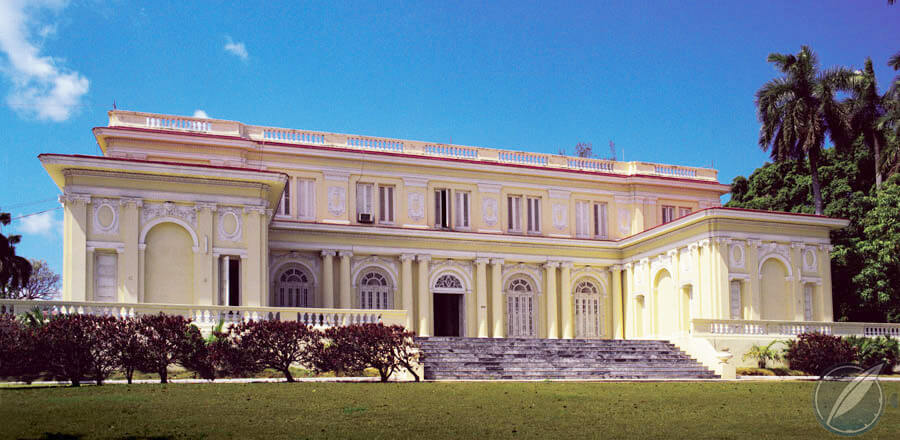
Historic El Laguito cigar factory in Havana, Cuba
There has been debate about just where these cigars were first made, but it did not take long before the wonderful old Spanish mansion on the outskirts of Havana known as El Laguito (really worth a visit if you happen to be in Havana during the Habanos Cigar Festival, but otherwise closed to the public) became their home.
Some authorities claim that the original place of production was in Pinar del Rio, a beautiful region worth visiting not just for the best tobacco fields in the world, but for the amazing mogotes (limestone mountains).
The location of production was supposedly the abandoned palace of the Marchioness of Pinar del Rio. That old mansion now houses a museum dedicated to natural sciences and offers visitors the sight of an enormous concrete Tyrannosaurus Rex, notwithstanding that apparently the giant lizard was never found in Cuba. U.S. President Barack Obama and First Lady Michelle Obama visited the museum on their historic trip to Cuba in March 2016.
Min Ron Nee, in his magnificent work An Illustrated Encyclopedia of Post-Revolution Havana Cigars (an absolute must for anyone serious about cigars), has yet another theory. He thinks that they were made at a former country club from 1964 before moving to El Laguito in 1967.
That estate had been brought into the “cigar family” in 1966 (although authorities argue over the exact timing). It was formerly the residence of the Fowler family, which made its fortune in sugar (as well as railroads, rum, banks, airlines and more) and was heavily involved in Cuban politics, right back to the early War of Independence.
The family, who fled after the Revolution, was not finished with Cuba, however, and it is understood that a member of the family was involved with the Bay of Pigs fiasco and was caught and jailed. The story then suggests that he was swapped for a quantity of penicillin. Other descendants based in the United States are still active in their opposition to the current regime.
Meanwhile, the man who rolled those original cigars for Castro, Eduardo Rivera Irizarri, has been quoted as saying he was working at El Laguito in 1963. Rivera Irizarri began his career in 1957, rolling at the Por Larrañaga factory. It was Rivera Irizarri who instigated the triple fermentation of the tobacco destined for Cohiba cigars – other producers use a double fermentation process.
When El Laguito opened its doors, the first requirement was cigar rollers. In one of the more interesting commercial decisions, reports claim that some 200 local prostitutes were rounded up and given training for their new career – two birds, one stone? It has maintained an almost all-female workforce ever since.
This decision was made by Castro’s girlfriend du jour and/or secretary, Celia Sanchez, who also allegedly chose the residence. Sanchez was also one of the very early revolutionaries. Many of the girls went on to roll cigars elsewhere but around 20 remained as the factory’s workforce. Before long, they were producing around 650,000 cigars annually.
Production is now believed to have increased to around three million cigars annually, though this is still small in comparison to the major factories. Originally, El Laguito was reserved for Cohiba cigars only, but later this was expanded to include Trinidad (and for a while Davidoffs – that ceased in 1990).
In 1966, the brand Cohiba was launched, but it did not become available to the general public until the early 1980s. In the early days, it was all for Castro or to be used as diplomatic gifts, although Rivera Irizarri has confirmed that the only person with the authority to offer them as a gift was Castro himself. Communists they might be, but nothing is more capitalistic than the creation of demand, and nothing creates demand like telling aficionados that they can’t have something. So when the Cohiba line was released in 1982, demand was fierce.
The name came from the original inhabitants of Cuba who called the tobacco plant, and the rudimentary cigars they rolled from it, “Cohiba.” It is understood that this decision was made by Celia Sanchez.
Numerous other cigars have appeared under the Cohiba brand over the years, and the Lancero has almost become a curiosity.
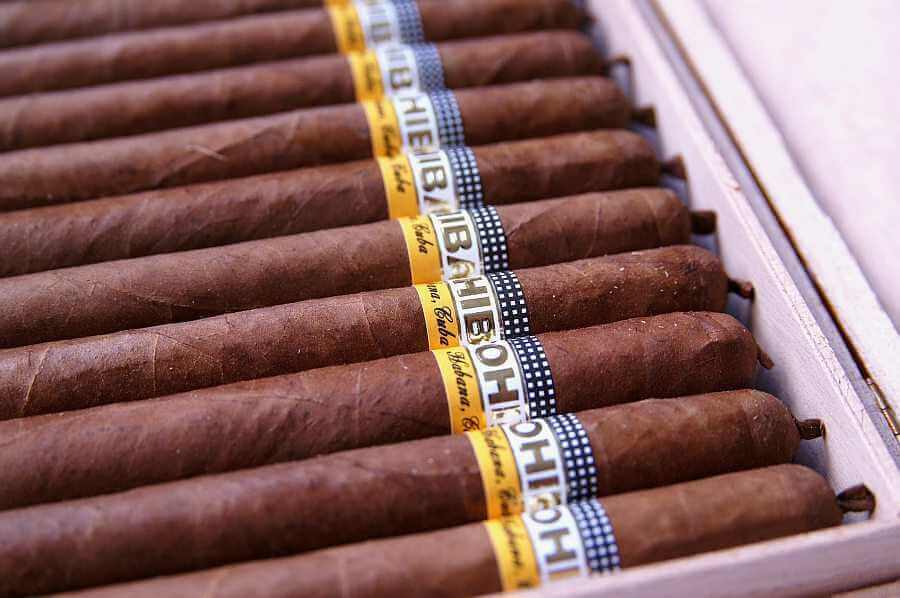
Cohiba Lanceros
Cohiba Lancero smoke notes
The cigar itself? The one smoked most recently was exquisite. Honey is often quoted as being part of the Cohiba “DNA” and this cigar was all honey, all the way through. Spiced honey, honeycomb, honey on toast. Gorgeous.
Mine also developed quite a lovely nutty note about halfway through, which was maintained for the rest of the cigar. Some cinnamon and lemon grass. Is there just a hint of dark chocolate?
There was no bitterness or hot burn and the draw, while firm, was fine. Balanced and with immaculate construction. Mine was from March 2020 but be in no hurry. These cigars will age and improve for many years to come.
I gave it a 95 and expect that to rise in time. A brilliant cigar and more than deserving of its fame.
Long live the long and skinnies.
For more information, please visit www.habanos-zigarren.com.
You may also enjoy:
Cohiba Maduro 5: Some Of The Most Faked Cigars In The World (For Good Reason)
Cohiba Espléndido Cubans: For Many, It’s The King Of Cigars
Believe The Hype: The Cohiba Talismán Limited Edition 2017 Cigars Are Spectacular
Car And Watch Spotting In Havana Starring A Cartier Santos Dumont And Beautiful Old-T imer Cars
Leave a Reply
Want to join the discussion?Feel free to contribute!



Si seguis borrando comentarios serios como el que le escribi de primera mano sobre los tabacos corre el riesgo de parcializar su excelente blog. Soy de Cuba y todo lo que le escribi en el comentario que no aprobó es la mas rigurosa verdad.
We do not delete comments unless there is inappropriate language involved; that is not our policy. Please write whatever comment you had and I’m sure it will be approved. There was probably a technical glitch somewhere.
I just went through the spam and trash comment folders and cannot find one from you that might have been deleted.